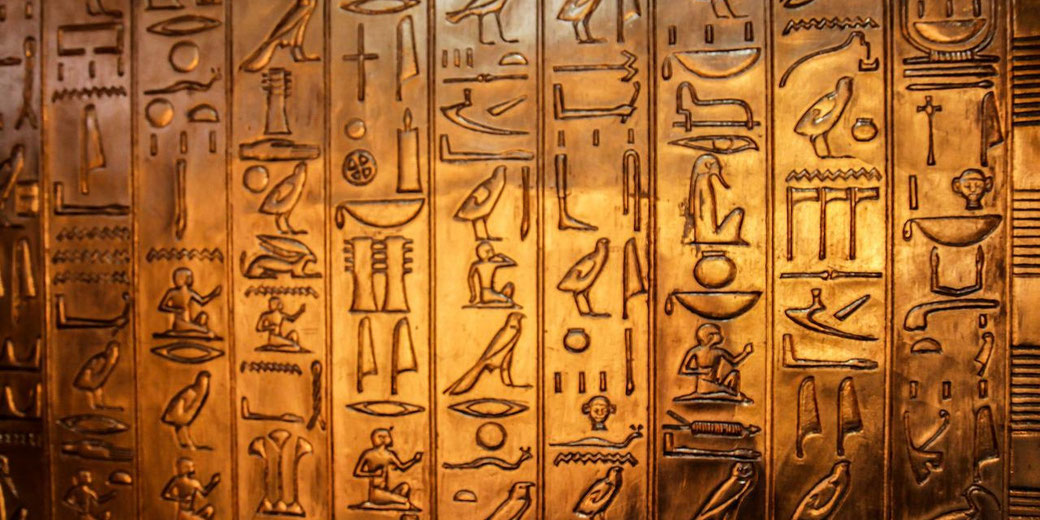
Teaching codebreaking, problem solving, and teamwork
This week I had the opportunity to teach a group of Year 6 and 7 students a topic of my choice about ancient history as a way to prepare them for high school. The only criteria I had is that it needed to be fun and challenging. So, with those rules, I decided to teach them how to translate ancient Egyptian hieroglyphs.
But, that sounds boring, right?
Well, I didn't just want them to sit still and write for the whole time, so I created three different lessons that challenged them in three different ways.
At the end of the last session, the students loved what they learned and wanted to do more.
Since I was incredibly pleased with how well it all went, I thought I would share my lessons and resources here for other teachers to use as well.
You can download all of resources mentioned in the blog post via this link.

Lesson 1: Learning the hieroglyph alphabet through codebreaking
After introducing the class to the atmosphere of ancient Egypt, I explained that no-one could read hieroglyphs for almost two thousand years. I gave them a very brief overview of Napoleon's invasion of Egypt and the discovery of the Rosetta Stone.
I then switched gears and told them that they were now living in France in 1822, and that they had been employed by a man called Jean-François Champollion, who had tasked them with helping him finally crack the hieroglyphs.
I broke the class into seven pairs, and each pair received a slip of paper with a name on it. Three of the pairs had English names, while the other four had hieroglyph names. They were told that the three English names matched three of the hieroglyph names (the other hieroglyph name was a 'red herring'). They then had to work together to match the names and start working out what each of the hieroglyph symbols meant in English.
Once the students had matched the names and had identified the English letters for the symbols they knew, I facilitated a discussion about how they went about breaking the code and working together as a team. Once that was complete, I showed them the complete hieroglyph alphabet and a few 'logographic' hieroglyphs (symbols which stood for a whole word, not just a letter).
To wrap up the first session, I told them that they had stumbled across a 'mysterious message' in some Egyptian ruins which they needed to translate. This was a good test of how they could use the new alphabet. Being the sneaky teacher that I am, the message actually prepared them for the next session...
Lesson 2: Treasure-hunting for a lost tomb
Now that the students had mastered the basics, it was time to get them moving.
I told them that it was now 1922 and that they were employed by the Egyptologist, Howard Carter. Carter had read their translation of the 'mysterious message' from the end of the last session and desperately wanted to find a 'lost tomb'.
The students were told that there were four clues hidden at four key locations around Egypt: Cairo, Amarna, Thebes and the Faiyum. I set up four stations around the room and carefully hid clues in each area. The students had to form four archaeological teams and 'travel' to their location to find and translate the clues.
Once each team had completed their search and translation, the class gathered back together to see if they could piece together their separate clues to solve the mystery of the lost tomb.
The class discovered a story of murder and intrigue that I had crafted together, based upon the key details of the lives of Akhenaten and Tutankhamen. They then traveled to the 'final location' and 'unlocked' the tomb to find who was buried within. As a reward, the class shared in the 'treasure' they found (which were some edible treats) as a reward for their efforts.
This was the most popular lesson of the three. After it was finished, I facilitated a class discussion about how their teamwork went, how they dealt with frustration and how confident they were in their ability to code-break the clues.

Lesson 3: Becoming a scribe
As a final activity, I thought it was time for some creativity.
The students were told that they were now living in ancient Egypt in 1347 BC. They had just started at scribal school and they were going to learn the tricks of the trade.
The students learned about the importance of a person's name in Egyptian life and afterlife beliefs. The students then had to write their own names using hieroglyphs.
We then looked at what a real ancient Egyptian scribe wrote on his tomb and discussed what Egyptians thought was important to be remembered by. We contrasted it with how we'd like to be remembered. The students then completed a reflection activity about what they want to be remembered for when they leave school.
As a final activity, the students were to write down their future career in hieroglyphs.

Final thoughts
Before starting these lessons, I wasn't sure how the students would engage with the content. I started the sequence by asking the class how many were interested in learning about history and only two students raised their hands.
However, by the end, every student indicated that they enjoyed the lessons.
I hope that you have similar success with the lessons, if you choose to do them as well. Feel free to leave any feedback on the free resources and what your students thought.
Enjoy learning hieroglyphs!






Write a comment
Eshani zamboto (Monday, 26 May 2025 20:58)
This is beautiful you are wonderful